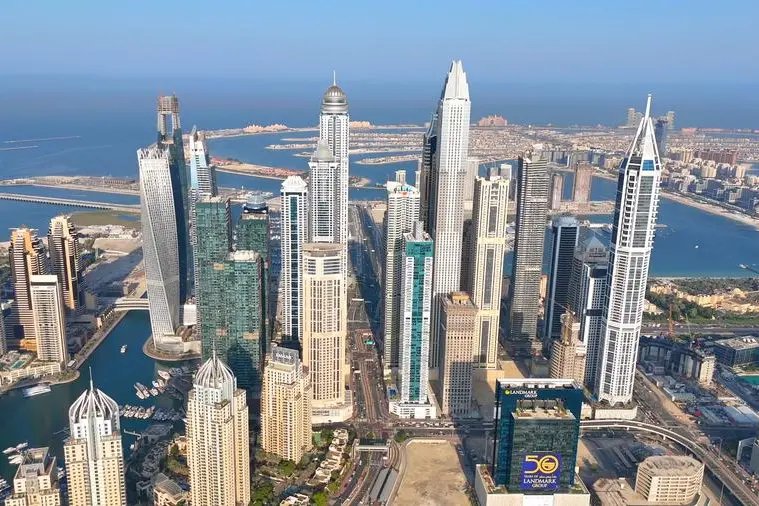According to an analyst, Dubai’s real estate market is expected to stay strong in 2025 due to the city’s tourism and investment demand. Although these factors support ongoing expansion, the volume of new deliveries is expected to alter market dynamics, prioritizing asset quality and location.
With record tourism inflows, robust off-plan sales, and an expanded supply pipeline, Elite Merit Real Estate shares its latest insights into Dubai’s real estate market as the city approaches the 2025–2026 business season.
According to Elite Merit Real Estate’s analysis, these factors support ongoing expansion, but the volume of new deliveries is anticipated to change market dynamics and give asset quality, location, and sustainability more weight.
According to an analyst, Dubai’s real estate market is expected to stay strong in 2025 due to the city’s tourism and investment demand. With an average hotel occupancy rate of 80.6%, the city saw 9.88 million visitors in the first half of the year, an increase of 6% year over year.
According to the real estate company, this momentum is bolstering demand for short-term lodging and rentals.
The average citywide price increased 3.7% from quarter to quarter to AED 1,749 per square foot, and 69% of deals in Q1 2025 were off-plan, indicating that sales activity is still increasing, especially off-plan.
The market for luxury real estate is at all-time highs. In Q2 2025, the total number of transactions for residences costing more than $10 million reached $2.6 billion, setting a new record for the super-prime market in Dubai.
Well above historical averages, Knight Frank estimates that 70,452 units will be handed over in 2025 and an additional 133,041 units in 2026.
According to a Fitch Ratings analysis, this increases the possibility of a 10–15% price correction even if it presents chances for purchasers, especially in the mid-market area where supply is concentrated.
Premium properties, on the other hand, are anticipated to hold their value because of their limited supply and high demand worldwide.
The best-positioned developers to preserve stability are those with staggered handovers, strong financial management, and strict escrow procedures. The “flight-to-quality” trend will pick up speed in the upcoming cycle, with brand, location, and ESG credentials becoming critical determinants of property value.
Dubai’s branded homes are attracting more and more foreign investors, according to Elite Merit Real Estate.
With values that consistently surpass those of the broader market, the segment has expanded to about 140 projects.
While short-term rentals benefit from a clear Dubai DET framework (AED 300 per bedroom, renewed annually), improving compliance and income security, mid-market neighborhoods continue to provide competitive rental yields for income-driven investors.
Mixed-use, diverse projects are also becoming more popular. Developments that include office, retail, and residential space are proving to be resilient, providing consistent cash flows and long-term tenants, even with office vacancy rates at only 7.7% and rents continuing to rise.
Dubai’s landscape will change as a result of important milestones. The market’s geographic reach will be increased by the relaunch of Palm Jebel Ali (which will add 13.4 km of new shoreline) and Expo Valley (532 units in phase one, with handovers starting in early 2026). Expo City is enhancing Dubai’s standing as a major international investment destination by drawing in more and more European HNWIs.
According to the Dubai real estate agency’s research, taken as a whole, these activities indicate a more diverse investment offering and a wider dispersion of demand until 2026.
The primary short-term issue is a sharp rise in supply, which could strain mid-market expansion. According to the report, affordability is also impacted by rising borrowing and service fees.
At the prime and super-prime tiers, however, record-high activity is anticipated to be maintained due to land scarcity, ongoing Golden Visa incentives, and growing foreign interest. According to the report, the most resilient developments in the next cycle will be those that are branded, environmentally friendly, and well-located.
